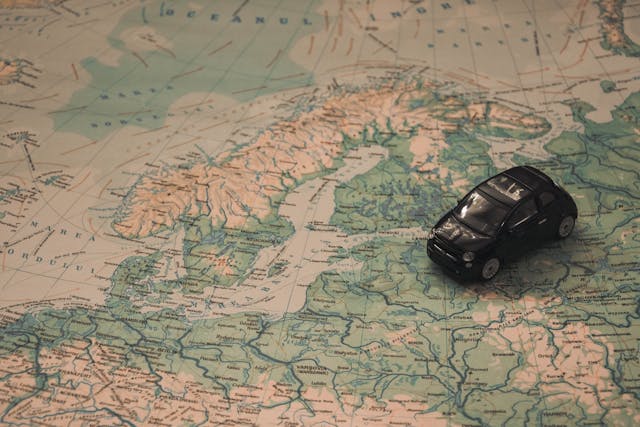Europe is a continent full of history, culture, and mystery. From the ancient ruins to its stunning architecture, there is always something new to discover. In this blog, we have identified 10 surprising facts about Europe that you may not have known.
- The Formation of the Giant’s Causeway lacks a scientific explanation

The Giant’s Causeway is a geological wonder located in Northern Ireland, consisting of approximately 40,000 interlocking basalt columns. The exact process by which the basalt columns were formed is still not fully understood, with different conjectures suggesting volcanic activity, cooling of lava, or geological uplift. Some local legend also believes it to have been around for between 50 and 60 million years old.
2. The Leaning Tower of Pisa was originally intended to be a vertical structure

Located in Pisa, Italy, the 56.7-meter-tall leaning tower was built in the 12th century as a bell tower for the nearby cathedral. The lean of the tower was believed to have been caused by an unstable foundation on soft ground. It is considered an engineering marvel, as it has managed to remain standing despite its lean. The tower is now open to the public and is a popular tourist attraction in Italy and Europe generally.
3. The Eiffel Tower was originally built as an entrance arch

The Eiffel Tower was originally built as the entrance arch for the 1889 Exposition Universelle, a World’s Fair held in Paris, France. It was meant to commemorate the 100th anniversary of the French Revolution and was intended to be a temporary structure. However, it was eventually saved from demolition and became a permanent fixture of the Parisian skyline. Today, it is one of the most recognizable and visited landmarks in the world.
4. The Czech Republic has the most castles in Europe
The Czech Republic boasts a large number of castles and chateaus, earning it the nickname “Land of Castles.” With an estimated 2 000 castles throughout the country, the Czech Republic is one of the world’s top destinations for castle lovers. Some of the most famous castles in the Czech Republic include Prague Castle, Karlštejn Castle, and Špilberk Castle.
If you love castles to a fault, you might want to check out a few ones in Vienna, book a train from Prague to Vienna here.
5. The Dohány Street Synagogue was once occupied by Nazi Germany
The Dohány Street Synagogue is an iconic building located in the heart of Budapest, Hungary. Built in the mid-19th century, it is widely considered one of the largest synagogues in the world. Today, the Dohány Street Synagogue is part of the Jewish Museum of Budapest and serves as a memorial to the Jewish victims of the Holocaust. However, the Dohány Street Synagogue also holds a darker history. During World War II, the Nazis occupied Budapest and used the synagogue as a stable and storage area. The synagogue was left in a state of disrepair for many years after the war but was eventually restored and re-opened in 1991.
Visitors are now allowed to visit the synagogue. So you can take a Vienna to Budapest train, and learn about its history. Make sure to pay your respect to those who suffered and lost their lives during one of the darkest periods in human history.
6. The Island of Iceland was one of the last places on Earth to be settled by humans
The island of Iceland was one of the last places on Earth to be settled by humans. It was first inhabited by Norse settlers and Irish slaves in the late 9th century and later by Scandinavian and Celtic immigrants. The island was largely isolated and had a small population for many centuries, which helped preserve its unique cultural and linguistic heritage. Today, Iceland is a modern, developed country with a thriving economy and a rich cultural heritage, but it still remains one of the least densely populated countries in Europe.
7. The Loch Ness Monster remains a Mystery
The mystery surrounding the Loch Ness Monster revolves around its existence and identity. Despite numerous reported sightings and efforts to capture evidence of the creature, no definitive proof of its existence has been found. Theories about the Loch Ness Monster range from it being a surviving plesiosaur, a giant eel, or even a mass hallucination, but its true identity remains unknown. The mystery has made the Loch Ness Monster one of the most famous and enduring legends of all time.
8. The Reason for the Construction of Stonehenge in Unknown
Stonehenge is a prehistoric monument located in England, which is believed to have been built between 3000 and 2000 BC. Despite extensive research and investigations, the exact purpose and builders of Stonehenge are unknown. Theories and conjecture include it being used for astronomical observations, religious ceremonies, or a burial site. Even more, how the stones got there equally remains a mystery. Despite all of these, Stonehenge continues to captivate the imagination and spark new research and discoveries.
9. Europe is home to more than 400 UNESCO World Heritage Sites
There are about 1,154 sites recognized by UNESCO around the world for their cultural, scientific, or historical significance. Europe houses more than 400 of these sites. These sites range from historic monuments and ancient ruins to natural landscapes and unique geological formations.
10. La Sagrada Familia is taking longer to build than the Egyptian Pyramids

The construction of La Sagrada Familia, a renowned church in Barcelona, Spain, has been ongoing for over 140 years, making its construction timeline longer than that of the Egyptian Pyramids. With each passing year, the church takes shape, revealing its intricate details and awe-inspiring beauty. The stunning architecture is not the only thing to admire about La Sagrada Familia, one must also appreciate the perseverance and vision that has gone into its creation, making it a truly special and enduring landmark.
Wrapping up
Europe is full of fascinating mysteries and surprising facts, making it a never-ending source of inspiration and wonder. The above are just a few examples of the many surprising aspects of Europe that make it such a captivating place to explore.
